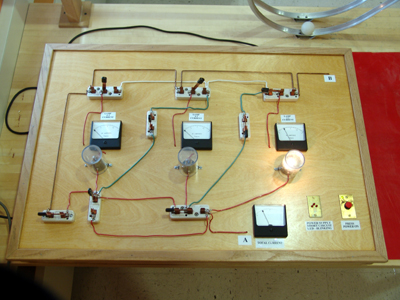
The purpose of this display is to show how the current flowing in a circuit depends on the various connection possibilities. A power supply applies a potential difference V between points A and B on the board. You may think of it as a battery, or the 110V at the outlets of your home. The lamps on the board can be connected in a variety of ways by means of the knife switches. The values of the currents in each lamp, and the total current are shown on the meters.
- CONNECT ONE LAMP
- Using the knife switches, connect lamp #1 only. Note the current flowing through the lamp is the same as the total current.

- repeat for lamp #2 and #3
- CONNECT TWO LAMPS IN SERIES

-
Connect lamp #1 an #2 in series. Note the current flowing through the each lamp is the same as the total current, and is less than the current total current in case I, when only one lamp was connected.
-
repeat with lamps #2 and #3
-
repeat with lamps #1 and #3
-
Connect all three lamps in series
- CONNECT TWO LAMPS IN PARALLEL
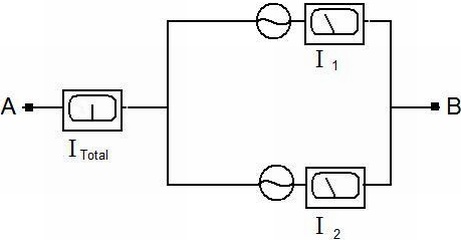
-
Connect lamp #1 an #2 in parallel. Note that the total current has twice the value you observed in case I when only one lamp was connected.
-
Repeat for lamps #1 and #3
-
Repeat for lamps #2 and #3
-
Connect all three lamps in parallel.
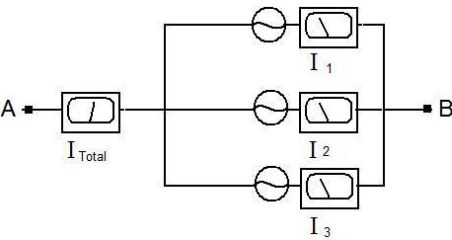
- SERIES PARALLEL CONNECTION
-
Now try something more complicated
-
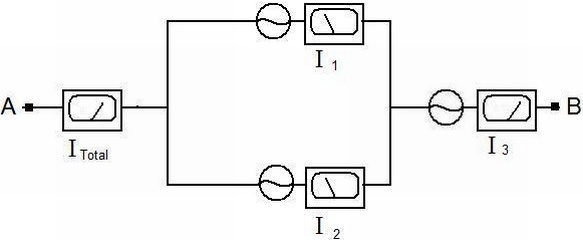
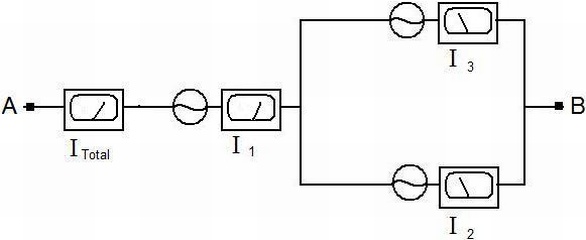
- SHORT CIRCUIT
-
If you connect points A and B directly the current will increase too much. The last knife switch you closed is the one that did it. Turn it off and all is OK. If you do the equivalent in your home a fuse or a circuit breaker will stop the current from flowing. You will have to go and fix it.
-